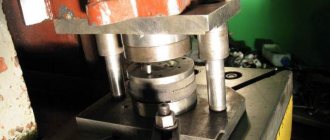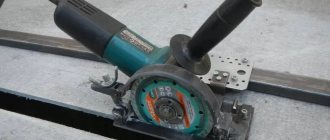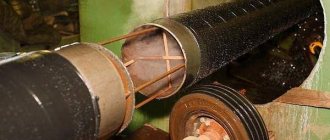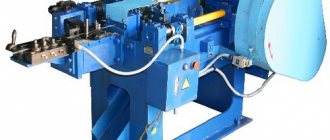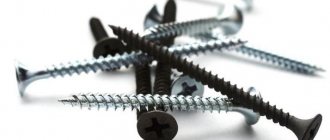Due to the increasing popularity of fuel briquettes, which are a relatively new type of solid fuel, many owners of private houses and residential cottages are thinking about purchasing or making their own machine for the production of pellets. The growing popularity of fuel such as pellets is facilitated by several factors: the relatively low price of pellets, their environmental safety and fairly high energy efficiency. When burning one ton of such fuel, the same amount of thermal energy is released as when burning 1500 kg of ordinary firewood, 485 m3 of gas or 680 liters of heating oil.
Pellets have long been known as an alternative fuel, but recently many have chosen them as the main source of thermal energy.
When deciding to make pellets on their own, many are also guided by the fact that for production on their own machines they can use waste from processing wood and agricultural raw materials, as well as paper and cardboard. Thus, if you have at your disposal a machine for making pellets, then with its help you can simultaneously solve two problems at once: dispose of waste at minimal cost and provide yourself with fairly efficient fuel.
Types of pellets
For the production of pellets, as mentioned above, various wastes are used:
- sawdust and shavings;
- bark, tree branches, dry leaves and needles;
- straw;
- wheat, rice and buckwheat husks;
- sunflower husk;
- fine fractions of peat and coal;
- paper and cardboard.
Pellets are produced from waste from the woodworking and agricultural industries
If we compare pellets made from different materials according to their degree of energy efficiency and ash content, then the highest quality are those made from wood processing waste - sawdust and shavings. It should be borne in mind that the presence of foreign impurities in the sawdust mass (such as tree bark and leaves) reduces the quality characteristics of the pellets.
Fuel briquettes offered on the domestic market are divided into two main types, each of which has certain quality characteristics. Private consumers use pellets mainly of the first grade, which are granules with a diameter of 4–8 mm, made from wood waste cleared of foreign impurities. When fuel briquettes burn, as a result of which they release 4.7 kW of thermal energy per hour, no more than 1.5% of ash remains. Such pellets can be used both for their intended purpose - for heating residential premises, and as a filler for cat litter.
Premium quality pellets are light yellow or even completely white in color.
Industrial grade pellets with a diameter of up to 12 mm are made from raw materials that may contain old and low-grade wood, bark, leaves, etc. The thermal performance of pellets of this grade, the ash content of which is in the range of 1.5–5%, is not exceeds 4 kW. Taking into account the low energy efficiency, it is advisable to use pellets of this type only in industrial boilers.
Industrial pellets are gray-brown in color due to the high content of bark and other impurities
The quality of the raw material (in particular, its density and humidity level) also affects the yield of the finished product - fuel pellets. So, if sawdust and shavings are used for pellets, the moisture content of which is in the range of 6–13%, then to produce one ton of briquettes you will need about 2.3 dense cubic meters of raw material, which is approximately 1.15 tons in mass terms. Accordingly, if the density of the source material is lower and the humidity is higher, then more of it will be required for the production of pellets.
Video on the topic of the article: how to quickly check the quality of pellets at home.
Pellet Making Machine Die
The matrix is the most important unit of a pellet machine. It is selected individually for each material. What is the difference between the different sizes? First of all, the compression ratio.
The compression ratio of the matrix is the ratio of the diameter of the die (one hole) to the length, or more precisely, to the length of the granulation path. One could say that the thickness of the matrix is the length of the granulation path. But this is not always the case, because the holes can be countersunk to form conical entrance sections, if this is necessary for a particular material.
The longer the bore and the smaller the bore diameter, the higher the compression ratio.
Each tree species or mixture of species must be analyzed. The most flexible and easiest to granulate are coniferous woods. Hardwoods are considered difficult to granulate; they require a higher degree of matrix compression.
However, too high a compression ratio reduces production, increases energy costs and the load on the working parts of the granulator. If the load is high and the channels are clogged with raw materials, an emergency stop of the device is possible. Also, the granules burn, acquire an unusual dark color, and lose quality.
An insufficient degree of compression, on the other hand, does not provide the required level of pressure, and the granules will turn out loose and crumble. To select the right matrix, professional advice is required, which can be provided by ALB Group specialists.
Another property of matrices is the grinding of channels. The smoother the dies are ground, the greater the production volumes and the higher the quality of the pellets. Abrasive materials leave chips on the surface of the channel; over time, the matrix wears out and becomes unusable. Therefore, it is considered a consumable item as well as the press rollers that interact with it.
Production technology
The process of producing pellets in production is very long, so some entrepreneurs are afraid to take on this business. But these are meaningless worries, as crushed sawdust does not deteriorate and is in high demand.
Production technology:
- The prepared raw materials are processed and sent to a crusher for grinding. This point is mandatory, otherwise the entire production of pellets will stall due to the breakdown of the granulator. Sawdust should be stored in a special container to prevent debris from getting on it.
- After crushing the wood, the crushed raw materials are sent to the dryer, where the moisture content of the sawdust is reduced to 12%. This item is the most expensive, but without it the pellets will rot or produce a low level of heat. 1 MW of energy is enough to dry the entire batch. Experienced manufacturers recommend burning waste left over from production in dryer compartments. If the sawdust humidity drops below 10, then the raw material is irrigated with steam or dispersion water.
- Next, sawdust is pressed using a special apparatus. Production volumes will depend on the size of the matrix - it can be flat or cylindrical.
- During pressing in the granulator, the pellets heat up and need to be cooled to improve the quality of the product.
- The final stage is sorting and packaging the resulting granules. Bags for pellets must be sealed to prevent water from getting into them during transportation. Recommended size: 20 – 25 kg per bag.
Manufacturers recommend using a cylindrical matrix in the granulator during production so that the final product is larger in size and the productivity of the equipment is higher. In a flat matrix, the pellets will be mini-sized, and their quantity will only be enough for personal use.
Types of pellet machines
There are 4 types of granulators.
Screw granulator
- the simplest, homemade machine for pellets. In essence, it is a large meat grinder with a drive: inside there is a feed auger that pushes chopped sawdust through the grate. Such devices are not mass-produced; they are completely homemade. There is no cutting mechanism on the outside of the matrix, so the granules fall off under their own weight. Typically, this design is used for mixed feed, especially since the diameter of the granule is too small for fuel pellets. However, some craftsmen press wood pellets on screw extruders.
Household Flat Die Granulator
- the most common in small production. Operating principle: crushed sawdust is fed vertically directly into the pressing chamber, the bottom of which is a flat, disc-shaped matrix. In the center there is an axis with 2-3 rollers, which move around the matrix in a circle and roll the material down into the holes (dies). The finished granules come out from below, on the other side of the disk. The production of the device depends on the diameter of the matrix and the size of the rollers. Household pelletizers operate at relatively low pressure and temperature, and the pellets do not require forced cooling.
Industrial Flat Die Granulator
– a device of a higher level, higher in power and performance. Typically the entire apparatus is cylindrical in shape. The production and diameter of the dies vary: the well-known Amandus Kahl devices have a diameter from 175 to 1250 mm, and engine power from 22 to 500 kW. Also, industrial machines for the production of sawdust pellets with a disk-shaped matrix are produced in China.
Industrial granulator with ring matrix OGM or DG
– the most common device in pellet factories. There are several reasons for this - high productivity, simplicity of the internal mechanism, high quality of the resulting granules. Pressing begins at the moment the wood pulp is clamped between the inner surface of the rotating matrix and the rolling press roller. The raw material passes through the dies under pressure. The process takes place at a temperature of 250-300 C, so the granules come out of the dies very hot. After pressing, they are sent to a cooling column.
The ring matrix is ideally selected for each type of wood or agricultural raw material.
Review of equipment models
Cost of an incomplete line: 4,500,000 rubles
Accessories:
- Crusher for small fractions. Model: DM27 AND DM35. Power: 35.5 kW. Cost at purchase price: 500,000 rubles.
- Dryer. Model: TYT-1300 or FET-RC1121. Performance: 9 kW. Dries up to 11,500 kg Dryer. Power: 50 kW. Warm air temperature up to 300 degrees. Removing moisture from 2,000 kg of granules per hour. Cost: 2,000,000 rubles.
- Granulator from a Chinese manufacturer. Model: SKJ550 or KL600 with a power of 55 kW. Product diameter from 10 mm. Cost: 1,000,000 rubles.
- Cooler. Model: SKLN4. Cost: 1,000,000. Cools up to 2,300 kg of pellets per hour. Power of the ventilated mechanism: 20 kW. With a 2 year warranty.
The cost of models is indicated without VAT and installation costs. For dryers and coolers, the indicators are given taking into account a humidity of no more than 50% for all products.
Advantages of ready-made production lines
Granulation or briquetting production lines are a fully equipped and streamlined system that allows the production of high quality products. Their advantages include the following:
- stable product quality. The setting is made in such a way as to ensure the production of finished pellets and briquettes that fully comply with the standards;
- high performance indicators. Thanks to properly selected equipment and optimization of technical solutions, it is possible to achieve high production volumes and output of finished products;
- ease of maintenance. All equipment manufactured by our company is reliable and easy to assemble. This significantly reduces service costs and also minimizes the likelihood of breakdowns;
- optimized energy consumption. Correct selection of equipment capacity allows you to reduce energy consumption and the cost of production without a drop in production volumes.
Machine for the production of sawdust pellets: what do you need to know before buying?
Before directly purchasing everything necessary to create a wood pellet production business, you should calculate all the nuances of the future business, evaluate all its advantages, and carefully consider all its shortcomings and problems.
Equipment (mini machine) for producing pellets
You should carefully study all the equipment necessary for this task, calculate which one is suitable specifically for your premises, your future operating mode. In this case, it is necessary to prepare the room itself: its dimensions must be at least two hundred square meters, while the required height of this room should not be less than ten meters.
It must be possible to supply electricity and have a normal access road. It is also necessary to select future personnel in advance, so that after installation of the equipment there is no downtime. It should be taken into account that workers need time to study the principles of operation of this equipment.
It is necessary to consider the possibility of supplying raw materials: the best option for creating this business is the sawmill itself, in addition, you should think in advance about the markets for the finished product. In the case when pellet production is established at sawmills, the payback of the business occurs after six months of work.
Tips for choosing equipment
To select equipment, you need to understand the scope of work that is expected to be performed. Large-sized machines are quite expensive and always turn out to be costly in terms of the amount of electricity consumed. If you need to produce a small volume of pellets, then small and low-productivity machines will be more profitable. We recommend looking at existing pellet manufacturers and conducting competitive intelligence.
Subscribe to us on Telegram, Yandex Zen and Vkontakte.
13.02.2020
How to organize a pellet production plant
Before starting an enterprise, a competent businessman will revise several business plans and make further forecasts for the development of his plant. To start building a personal file, you need to consider all the negative and positive aspects of production. And only then, to start operating the business, you need to conduct analytics on the following points:
- Identify markets
- Identify buyers;
- Assess approximate risks, costs, expenses for damaged products
- Set the cost of workers' compensation
- Identify direct competitors
- Study manufacturing technology
- Find quality equipment to purchase
- Organize a room that meets all requirements
- Find personnel and PR person
- Determine the cost of products
- Recruit a logistics team
The pellet production business is registered as “Company Name LLC.” It is worth understanding that there are now more than 150 competing factories on the market, so to get started you need to clearly think through the project and personal advantages. To increase the level of demand, it is better to develop a base abroad over time in order to obtain a certificate for international trade. Foreign markets are more in demand for Russian wood pellets, due to the lack of raw materials in their countries. In-demand enterprises sell (export) pellets abroad at 300 euros per ton of product. Today, this is the best indicator on the market.
Scheme of operation of the pellet production line
As with any production line, the manufacturing process is divided into several stages.
Supply of raw materials and storage of sawdust
Already at this stage, some difficulties arise, which are determined by the quality of the raw materials. To produce one ton of pellets, 3m³ to 6m³ of sawdust is required. To calculate the production requirement for raw materials per 1 ton of finished granules, you can apply the following formula:
(100% - W granules) / (100% - W raw materials) = tons of sawdust, where
Wraw materials - relative humidity of sawdust in%; W granules - relative humidity of finished granules in %.
Harvested raw materials should be taken into account in cubic meters based on the density of wood waste, which is determined empirically or taken from reference books.
An example of calculating the raw material requirements for the production of 1 ton of granules
Given:
Raw materials - 80%; W granules - 10%.
We assume the mass density per m³ of wood is 0.9 tons.
We substitute the data into the above formula and get the need for raw materials to produce one ton of products:
(100% - 10%)/(100% - 80%) = 4.5 tons of sawdust or 4.5 tons/0.9 = 5 m³
The formula can be checked in reverse. If, during drying, the starting material loses order
77.7% mass = 100%*(80% - 10%)/(100-10%),
then the mass of the finished pellets will be 22.3% of the sawdust mass.
Accordingly, 1 ton of raw materials/22.3% = 4.48 tons or 4.48 * 1.11 = 5 m³ of initial sawdust with a given moisture content.
Weight of 1m³ of raw materials relative humidity of the original wood
| Wood type | % relative humidity of raw materials | |||
| 12 | 25 | 50 | 60 | |
| Poplar, spruce | 430 | 480 | 720 | 950 |
| Aspen, linden, pine | 480 | 530 | 800 | 1000 |
| Birch | 610 | 670 | 1000 | — |
| Larch | 640 | 680 | 1050 | — |
| Fir | 350 | 400 | 600 | 750 |
Based on the degree of preparation of the raw materials, the technology for their production and the presence of certain components in the production line are determined.
The influence of the parameters of the feedstock on the technological process and the quality of the finished product:
- With high humidity of the feedstock, additional drying capacity will be required, energy and labor costs will increase;
- With a large fractional composition of raw materials, there is a need for additional preparation by grinding and separation, investment and energy costs increase;
- When mixed raw materials consisting of different types of rocks are supplied to production, the efficiency of the granulation process and the stability of the line operation are reduced;
- When bark, rot and old wood predominate in the composition of raw materials, the energy value of the granules decreases, the cost of the finished product decreases, and, consequently, the profitability of the enterprise.
When planning the launch of production, conduct a preliminary assessment of the quality of raw materials. Your costs and future profit will depend on this.
Pre-shredding of wet material
As a rule, raw materials for the production of pellets on an industrial scale come from wood processing enterprises. Naturally, no one sorts the waste and the mass of sawdust includes wood chips, bark, bars, slabs and other types of large fractions. For preliminary grinding, deck-type hammer mills are used. Such mills can be loaded with waste with a moisture content of up to 80% and prevent material from sticking to the internal parts of the equipment.
Drying raw materials (sawdust)
It is understood that we receive pre-crushed raw materials for production, the fraction of which does not exceed half the length of the finished product.
Raw material condition factors that increase production costs:
- The presence of a large amount of bark and wood chips in the sawdust mass requires additional separation or grinding;
- The presence of sand and stones, which get into the raw materials during the process of felling and transportation, requires the installation of special catch pockets or washing of sawdust;
- Heterogeneity of raw materials by wood species.
To dry raw materials, drying drums are used with the ability to load sawdust with a relative humidity of 80-100% and a final relative humidity at the outlet of 8-12%. Sawdust is supplied by screws, which is the cheapest way to transport raw materials to the drying chamber. If there is a large fraction in the feedstock, then the equipment may jam as a result of particles getting between the screw and the “jacket”. In this case, it is possible to use flexible spring augers or axial augers with a spiral.
Equipment for raw material drying line:
- Gas generator or other source of hot air supply;
- Drying drum with rotation drive and variable rotation speed;
- Cyclone for receiving dry finished raw materials;
- Storage hopper for dosed supply of sawdust into the drying drum;
- Cyclones for cleaning flue gases from dust and collecting fine fractions (ecological requirements);
- A smoke exhauster that ensures air passes through the drying drum and cyclones at the design speed;
- Conveyor or auger for feeding dry raw materials into a storage hopper;
- Line control and automation panels.
Technological process for drying sawdust:
- The heat energy source is equipped with equipment that prevents flames and sparks from fuel combustion from entering the drying drum. Air intake for heating and subsequent supply to the drying drum is carried out from the street from an area where there is no dust from production;
- The raw materials pass through a drying drum located horizontally on rollers, and the uniform distribution of the mass is controlled. To ensure process safety, an explosion valve is installed;
- Under the influence of a flow of hot air (about 7000C at the inlet and 1000C at the outlet), the sawdust is dried to the calculated humidity and enters the cyclone, where the raw material is deposited and dosed out by a sluice feeder;
- Flue gas cleaning is carried out in a cyclone, which is designed to remove wood dust;
- All stages of drying are controlled automatically through the control unit.
Inside the drying drum, along the circumference of the body, there are blades that provide agitation of the material. Continuous mixing in a stream of hot air guarantees uniform drying of sawdust and supply of material to the output with stable characteristics.
Dry material crushing
Ideally, sawdust supplied for pressing should have a length of no more than 4 mm. That is why, for high quality products, additional crushing of the material occurs. For most pellet production lines, a standard particle size of no more than 1.5 mm and a bulk weight of 150 kg/m³ is established. To grind sawdust, it is most advisable to use hammer mills, which are designed for grinding source material with a moisture content of no more than 25%. The main parameters of the equipment are the output of the supplied material and the output of the air. Since hammer mills not only perform grinding functions, but also create air pressure to remove crushed material, calculations should be made using a collection cyclone.
Receipt of dry and crushed raw materials into the receiving bunker
As we wrote above, crushed dry sawdust, under air pressure created by the rotation of the hammers in the mill, enters the cyclone of the receiving hopper. The principle of operation of the cyclone is that the material supplied with air directed downward is twisted in a spiral and, under the influence of centrifugal force, is pressed against the walls of the equipment. Losing speed, sawdust is deposited at the bottom of the cyclone, and the purified air exits through the so-called exhaust pipe.
Humidification of raw materials
Sawdust that has undergone a full preparation cycle may be drier than required for pressing. So the optimal humidity parameter for raw materials is considered to be 8-12%. At lower moisture values, additional humidification is required, which is carried out in screw mixers by supplying steam under pressure or sprayed water. It is very important to constantly monitor the moisture of raw materials during the technological process, using moisture analyzers that operate on the principle of drying and simultaneous weighing of the material.
Sawdust granulation
The main process of producing pellets from sawdust is granulation of the prepared material. The presses used in the sawdust processing line differ in the type of matrices: round and flat. Round dies are designed for less elastic materials and are used in the food, chemical and feed industries. Flat dies are designed specifically for solid waste processing. The principle of operation of the two types of presses is almost the same - rollers move along the surface of the matrix, squeezing the compressed raw materials through the holes, after which the resulting cylinders of a given diameter are cut with knives. The formation of pellets occurs in the matrix channel and there is some peculiarity of the equipment that is revealed during the operation of presses from various manufacturers. If the matrix is thick, then the formation occurs due to the length of the polished channel (resistance); with a thin matrix, on the contrary, the raw material is pressed due to the roughness of the unpolished channel. When the matrix is ground in, the pellets slide along its walls without reaching the desired density. A way out of this situation may be to go through the channels with a file to give them their original appearance.
Cooling of granules
At the exit from the press, the granule has a temperature of about 900C. If, without waiting for the temperature of the product to drop to 20-300C, then the product in the package will be “steamed” and the granules will be destroyed to the state of the original raw material. Pellet cooling is carried out in direct-flow columns by supplying external air through a layer of finished products. The cooler volume is calculated for a full bunker load with a small performance margin. It is not recommended to install an additional cooler if the pellets are not cooled to the required temperature, since transportation of pellets that have not gone through the full technological cycle causes their partial destruction.
Dosing and packaging
The amount of equipment used for dispensing and packaging depends on the task being solved. Screw feeders and electronic platform scales are used to fill finished products into big bags (containers). Dust is removed from the work area by local additional aspiration. Packaging into smaller containers is possible on hanging scales equipped with load cells that turn off the feeder when the set weight is reached.
Production requirements
To organize a personal business for production you will need:
- Devices from trusted manufacturers
- Large room with high ceilings - 5-6 meters. On average, buildings of 100 sq/m with free and spacious shipping areas are suitable for established production. The room must support a 380 V network. If there are through gates on opposite sides, then the production line should be located from one door to the other. This arrangement will reduce product processing time when packing and shipping the product. If there is one door, the line rotates 180 degrees.
- Highly qualified personnel to monitor the level of operation of the mechanisms. Working at such a plant is a labor-intensive process that requires careful monitoring of the operation of the mechanisms, so there must be at least two people at the machine. They must continually monitor production optimization and performance.
- Additional staff. Electricity, cleanliness and teamwork are the main components of the pellet production business. Therefore, the enterprise needs an electrician, a technician and a mechanic.
Pellet granulation line - important features
Based on the above, we can say that the pellet granulation line is not such a complex piece of equipment to use.
Pellet granulation line - the necessary equipment for production
At the moment, there is a huge selection of a wide variety of types of similar equipment from various manufacturers. If someone is planning to create this type of business, then he can easily choose the most suitable equipment for the type of production for his production.
Is it possible to make a machine for making pellets with your own hands?
This question is asked by many people who want to start this type of business. You can make a pellet machine yourself if you have free time, some experience in metalworking and turning, patience, and the availability of the necessary funds to purchase the necessary components.
Homemade installation for making pellets
In addition, this machine, made independently, is adjusted to your wishes: the required power and the required dimensions. You will know this equipment down to the last screw, and will be able to assemble and disassemble it even with your eyes closed.
Spare parts for subsequent repairs are also made independently: therefore, the financial costs of purchasing factory components are significantly reduced.
Buy a machine for the production of pellets from ALB Group
The ALB Group company produces granulators OGM 1.5 and OGM 0.8, on which our clients produce pellets according to the EN-Plus-A1 standard. Our equipment receives excellent reviews from owners of pellet lines.
We produce pelletizing lines for different types of wood: softwood sawdust, hardwood, as well as slab and pulpwood. Extensive experience allows us to produce machines with fine adjustment to the type of material, so that the equipment always produces the required volume of product.
If you decide to buy an OGM pellet machine from our company, you will receive a powerful and reliable unit that produces pellets according to European standards. We accept orders from Russia, CIS countries and neighboring countries.
For information , write to us in the contact form
or by phone
+7.
Necessary equipment
Equipment for making pellets can be industrial or domestic, the latter is used in the production of mini-pellets for household use. The production line is driven by diesel and electric engines. A tractor shaft is also used. This is the most common option. It is capable of providing pellet equipment productivity up to 250 kg/h.
Necessary equipment for setting up a production line:
- Tenon cutter. It is designed for grinding raw materials.
- Dryer drum.
- Cooler. The device is used at the final stages of production.
- Press.
- Mill and screw mixer.
At a minimum, you will need a drying drum.
The cost of purchasing all the equipment is approximately 2 million rubles. A machine for the production of biological fuel, powered by electricity, can only be stationary. This greatly reduces the mobility of the equipment and leads to additional costs; in addition, a special place must be equipped for it, which also increases the cost.
Installations on a diesel engine and a tractor shaft have high mobility. This allows them to be placed close to the woodworking plant. This option is much more profitable, since you do not need to spend money on transporting raw materials for production to the place where the pellets are made.
A stationary industrial line is capable of producing up to a ton of pressed sawdust per hour. The cost of such equipment is about 130,000-150,000 dollars. The return on investment occurs within seven years.
Variants and differences of production lines
Manufacturing wood pellets is a profitable business. The big advantage of working in this area is that both timber and wood processing waste can be used as raw materials, for example, low-quality wood, transport pallets, wood waste, etc. By contacting our company, you can purchase a production line with a capacity from 300 kg to 2000 kg per hour.
Depending on the configuration, the granulation production line may include various stages:
- grinding
- drying of raw materials.
— regrinding of raw materials.
- granulation.
— cooling and packaging of finished granules. .
Technological process
Regardless of which machines are used for the production of fuel pellets, the production process consists of such technological operations as:
- Cleaning and preliminary grinding of raw materials, which are brought to such a state that the length of its particles does not exceed 2.5 mm.
- Drying sawdust mass, the humidity of which is brought to a level of 9–12%.
- Final grinding on a machine, which is carried out so that the maximum length of the particles that make up the sawdust mass does not exceed 1.5 mm.
- Mixing the crushed raw material with water or treating it with hot steam (this technological operation is used if the moisture level of the sawdust after drying and grinding has dropped below the minimum permissible value).
- Pressing the sawdust mass, as a result of which cylindrical granules are formed from it (for the practical implementation of this technological operation in a production environment, matrix installations of a cylindrical or flat type can be used; at home, homemade installations of a lever, screw or hydraulic type are suitable for the formation of fuel briquettes) .
- Cooling of finished pellets, which during their formation using high pressure spontaneously heat up to a significant temperature.
- Sorting of finished fuel pellets and their packaging.
Pellet production line
The waste generated after the implementation of the above-described technological process can be recycled. At the same time, pellets from them are created using the same algorithm.
Mini-lines of pellets for small businesses and individuals
This pellet production line, small in production volume, is most suitable for private home use: or for very small businesses. There is no additional equipment that is responsible for drying raw materials, the process of grinding them, and there is also no equipment for packaging finished products.
Mini pellet production line - suitable for small scale
The mini-equipment consists of a granulator into which the process of loading raw materials is carried out manually. Next, the raw material enters the granulation matrix, where the pressing process is carried out using rollers.
The main advantages of such production
- Quite low costs for energy sources.
- Such production can be started at any time when the need for pellets arises.
- The possibility of producing combined animal feed in granular form using this equipment.
But there are also some disadvantages. There is no possibility of dosed loading of raw materials: everything is done manually. The service life of the matrix device is too short.
This mini-equipment has a dual purpose: it is possible to produce animal feed on it - in fact, two types of business are created on one equipment.
Manufacturing technology
The production of pellets takes place in several stages. At first, the raw materials are crushed into small parts. Next it is dried. After drying, it is crushed again into smaller fractions. Next, preparation is carried out using water, that is, the residual moisture should not exceed 10%.
This is important, since pressing raw pellets will require more effort, and they are not suitable for boilers, since they burn worse and generate less heat.
At the next stage, production involves pressing the pellets and re-drying. The finished product is packaged in one kilogram.
Particular attention should also be paid to the water content of the granules. Because too dry raw materials stick together worse. Some moisture dosage is needed. Pellets need to be cooled after the molding press. After which they are packaged.


